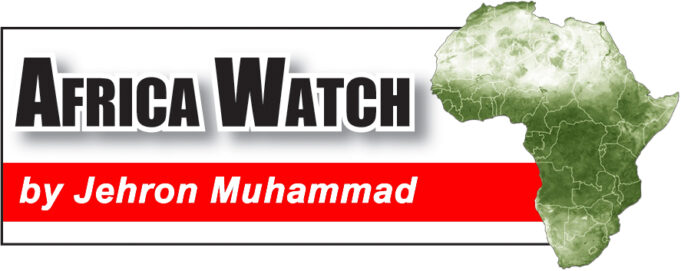In early April, Muslims around the globe began Islam’s Holy Month of Ramadan, including East Africa’s Kenya where 10 percent of the population are adherents to the faith. Many worshipers gathered, in large numbers, right before Ramadan at the Jamia Mosque.
Though Islam represents only 10 percent of Kenya’s population of 56.2 million, according to Ustadh Hassan Ali Amin, chairman of the Council of Imams and Reverends, the religion is on the rise. On contributing factors of why Islam is on the rise, Mr. Amin suggests there are several. “Islam is on the rise not only here in Africa or Kenya, but generally in the world. … One of them (factors) is propagation; second, teaching; third, people have now entered into the tendency of wanting to know more about Islam through social media and other stuff, IT in general, and also, exposure. Our Ulamas (Muslim scholars) and our leaders are really trying hard to open up for the people to understand more,” he said.
Pewresearch.org, projecting the Muslim population of East Africa, which includes Ethiopia, Kenya, Tanzania and Uganda, “is projected to increase from 70.3 million in 2010 to 109.5 million in 2030.”
In Southern Africa, Pew projects a similar forecast. “The Muslim population is expected to increase slightly, from 757,000 in 2010 to 824,000 in 2030. The Muslim share of Southern Africa’s population is projected to remain at 1.3 percent.
The Sub-Regions in West Africa or so-called Sub-Saharan Africa—in contrast to Southern Africa with the smallest Muslim population—has an Islamic majority. “The numbers of Muslims in West Africa is projected to increase by more than 60 percent in the next 20 years, from nearly 160 million in 2010 to about 257 million in 2030. Muslims are projected to make up 55.6 percent of the population in West Africa in 2030, up from 52.2 percent in 2010. The most populous country in West Africa is Nigeria, which has the largest Muslim population in all of sub-Saharan Africa,” Pew notes.
Of the nine other nation-states in the region that are expected to have the largest increase in Muslim numbers, “six are Muslim-majority,” including Niger, Burkino Faso, Mali, Senegal, Somalia and Guinea.
According to the International Journal of Environmental Science and Development, “Africa was the second continent that Islam spread into, which explains why almost one-third of World Muslim population resides in this continent.”
Instead of combining North Africa with other regions of the continent of Africa, pewresearch.com has defined this region, in which they include the Middle East, as having the highest concentration of Muslims of any region of the world, noting that “93 percent of its approximately 341 million inhabitants are Muslim, compared with 30 percent in sub-Saharan Africa and 24 percent in the Asia-Pacific region.”
Note: Some scholars suggest the Middle East, where Prophet Muhammad (PBUH) received the “revelation from Allah,” which became the Muslim holy text called Qur’an, is actually a part of Africa, divided by the man-made Suez Canal.
Louis Brenner, from the School of Oriental and African Studies, University of London, in his brief review of the 2016 published “Beyond Timbuktu: An Intellectual History of Muslim West Africa” by Ousmane Oumar Kane, gives a partial reasoning for the rise of Islam in West Africa.
He writes the book “is an insightful analysis of how, through the centuries and from different perspectives, Muslim intellectuals shaped the production, dissemination, and content of Islamic knowledge in relation to the socio-political contexts in which they lived.”
He adds, as the author demonstrates, “this process continues today in the ways the transformation of Muslim educational institutions and availability of new communication technologies make possible a resurgent Muslim presence.”
Adding to that, a scientific study has yet to be published and research is necessary to give substance and analysis to a wealth of data on the impact on Africa of Islamic groups like the Nation of Islam (NOI) and its National Representative the Honorable Minister Louis Farrakhan. His extensive travels on the continent especially in West Africa, his interaction with African leaders, politicians, Muslim scholars and influential imams and sheiks, and opening an office in the 1990s in Ghana at the request of President Jerry John Rawlings, and holding the NOI’s annual Saviours’ Day Convention in West Africa in 1994, is the substance studies and subsequent data reviews are made for.
This just being a small preview of the NOI’s work on the African continent—which has never been translated into a Pew Research-like study—in terms of what this NOI propagation of the faith of Islam represents. Add to that, the spread of Islam via YouTube videotapes and social media of Min. Farrakhan.
The research question remains: how many millions have listened to and in turn shared video lectures of Min. Farrakhan and his students, and how influential have they been in the spread of Islam on the African continent? Follow @JehronMuhammad on Twitter













